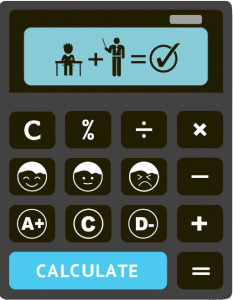Overview
In Year 6 maths, geometric reasoning takes centre stage, and understanding this topic is crucial for your mathematical journey. Geometric reasoning involves exploring angles and their properties, which play a fundamental role in various fields of study, from architecture to engineering. Let’s embark on this fascinating journey of angles and reasoning!
Learning Outcomes
By the end of this article, you will have a solid understanding of:
- The different types of angles
- How to name angles
- Complementary and supplementary angles
- The angles at a point
- Vertically opposite angles
- How to find missing angles using these concepts
Types of angles
Let’s begin with a refresher on angles. An angle is formed when two rays or segments share a common endpoint, called the vertex. In Year 6, we explore various types of angles.
The simplest one to identify is a right angle, which resembles the letter ‘L’ in English. A right angle measures 90∘ (degrees), and it’s found in many objects around us. Can you think of any examples?
Moving on, we have acute angles, which are smaller than a right angle, measuring less than 90∘.
In contrast, obtuse angles are larger than a right angle, ranging from 90∘ to 180∘.
Next, we encounter straight angles, which form a straight line measuring exactly 180∘.
Lastly, we explore reflex angles, which are greater than 180∘ but less than a full turn. Speaking of a full turn, did you know that it measures 360∘? Isn’t it fascinating how angles are connected to the concept of a full rotation?
Estimating Angles
As discussed above, a right angle measures 90∘, and looks like the letter ‘L’. So, if we split it up into two equal parts, each one must measure 45∘. Likewise, if split up a right angle into three equal parts, each one must measure 30∘. Combining two of them will give 60∘. This is a cool way to estimate the measures of some of the most common acute angles you will come across.
Naming Angles
Naming angles is essential when solving geometry problems, as it helps us identify and refer to specific angles accurately.
Look at the angle shown in the figure below. There are three ways to name it: \(angle AOB\), \(angle BOA\), or simply \(angle O\).
Note, however, that you can’t name \(angle AOD\) in the figure below as \(angle O\). Why? Think!
Complementary and Supplementary Angles
Angles can have fascinating relationships with one another. Two angles are said to be complementary if their sum equals 90∘. Can you think of a pair of angles that are complementary?
In the figure above, \(angle POQ\) and \(angle QOR\) are complements of one another.
On the other hand, two angles are considered supplementary if their sum equals 180∘. Thus, 75∘ and 105∘ are said to be supplements of one another.
In the figure above, \(angle MNP\) and \(angle PNO\) are supplementary.
Angles at a Point
Since a full turn measures 360∘, the angles at a point always add up to 360∘.
Imagine you’re standing at a particular point. You can turn around in a complete circle, making various angles along the way. The sum of all those angles is equal to 360∘. Can you visualize it?
In the figure above, the degree measures of \(angle AOB\), \(angle BOC\), \(angle COD\), \(angle DOE\), \(angle EOF\) and \(angle FOA\) add up to 360.
In the figure below, can you find the value of x?
Vertically Opposite Angles
When two lines intersect, they form four angles, and the angles opposite each other are called vertically opposite angles. Vertically opposite angles have equal measures.
In the figure above, \(angle AOB\) and \(angle COD\) are vertically opposite. They have the same degree measure. Likewise, \(angle AOD\) and \(angle BOC\) are vertically opposite angles.
In the figure below, can you find the value of a?
Wrap Up
Congratulations! You’ve journeyed through the captivating realm of geometric reasoning in Year 6 maths. Understanding angles and their properties will serve as a strong foundation for your future mathematical endeavours. Whether you’re exploring the types of angles, naming them, or uncovering their relationships, you’ve developed essential skills.
Remember, if you encounter any challenges or year 6 maths problems related to geometric reasoning, don’t hesitate to seek further assistance. We are here to guide and support you. Embrace the world of geometry and continue to explore the wonders of mathematics!
















